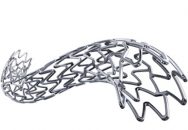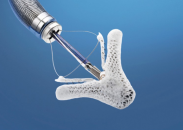Silent ischemic embolic lesions are common after transcatheter aortic valve implantation (TAVI). The use of cerebral protection devices might reduce the occurrence of these embolic lesions. Multiple studies with different devices, designs, and outcomes challenge the usefulness of cerebral protection during TAVI. A comprehensive analysis of the literature was necessary to obtain a more…
Carotid stenting or endarterectomy? considering vascular anatomy…
Complex vascular anatomy could increase the risk of periprocedural stroke during carotid artery stenting (CAS). However, no randomize study has provided evidence showing this potential difficulty should inform the choice between carotid stenting and endarterectomy. This study included 184 patients with symptomatic lesions of the internal carotid randomized to CAS vs. endarterectomy in the context…
Moderate Aortic Stenosis and Ventricular Dysfunction: Should Valve Replacement Come Sooner?
Ventricular dysfunction and moderate aortic stenosis are more frequent with advancing age and often coexist. Afterload reduction is one of the main pillars of pharmacological treatment of heart failure, and aortic stenosis (even that of moderate severity) increases the afterload. Nowadays, aortic valve replacement is only formally indicated for symptomatic severe aortic stenosis. This…
EVOLVE II: Diabetes Substudy: Results at 3 Years after the SYNERGY Stent in Diabetics
Courtesy of SBHCI Diabetic patients have worse evolution after coronary PCI. Drug eluting stents with bioresorbable polymers were designed to facilitate arterial healing, and reduce inflammation and late and very late thrombosis risk. This sub-study of diabetic EVOLVE II patients presents the 3 year outcomes of the SYNERGY stent. The EVOLVE II included…
CENTERA: Results of the New Self-Expandable Valve
This new device offers the advantage of a lower frame height, which reduces the chance of coronary occlusion. The delivery system is totally motorized and the valve can be repositioned. In addition, the sheath is “14 F” for all valve sizes (23, 26 and 29mm). 203 patients were included, all with severe aortic stenosis…
ARTE: Aspirin or Aspirin and Clopidogrel after TAVR?
Courtesy of SBHCI. This study presented at Euro PCR and simultaneously published by JACC Cardiovascular Interventions poses a question that has remained unanswered since the start of TAVR. There is little information on the optimal antithrombotic therapy after transcatheter aortic valve replacement (TAVR). In general, patients receive between 1 and 6 months of dual…
Second-Generation DES Present Lower Mortality Rates for Vein Grafts
Courtesy of Dr. Carlos Fava. The treatment of vein graft lesions has always been difficult in relation to angioplasty, due to their characteristics. While drug-eluting stents (DES) have proven to be superior to bare-metal stents (BMS) for coronary arteries, such superiority is unclear as regards vein grafts. Several studies with first-generation DES (DES1) have even reported…
Bad prognosis for post-MitraClip mitral valve stenosis: how do we proceed?
Courtesy of Dr. Carlos Fava The EVEREST II trial showed the MitraClip had similar mortality rate to that of surgery but, even though residual mitral valve regurgitation (MR) is associated to a strong negative impact, little is known about post MitraClip increased transvalvular gradient and its implication. 268 patients undergoing MC implantation were analyzed.…
DEFINE FLAIR and IFR SWEDEHEART: Safety in Revascularization Based on FFR and iFR in Both Stable and ACS Patients
The safety of physiology-based coronary revascularisation has been supported by evidence for years now. DEFER (1998-2001) was one of the first related studies. However, major changes in device and medical treatment safety and efficacy have taken place since then. This could affect clinical results, particularly as regards acute coronary syndromes (ACS). Several studies have cast…
DESSOLVE III: Xience vs. MiStent
The MiStent device is made of cobalt-chromium, with struts of up to 64 µm thick. It is coated with a completely absorbable polymer that contains a microcrystalline form of sirolimus that embeds directly into the vessel wall. The drug is eluted continuously for up to 9 months. This was a multicenter noninferiority study that randomized patients…









